
Journal of Integrative Bioinformatics
Scope & Guideline
Empowering Researchers with Cutting-Edge Bioinformatics Solutions
Introduction
Aims and Scopes
- Computational Biology and Bioinformatics:
The journal covers a wide range of topics within computational biology, including the development of algorithms, tools, and models for analyzing biological data. This includes phylogenetics, genomics, proteomics, and systems biology. - Machine Learning Applications:
A significant focus is placed on the application of machine learning and artificial intelligence techniques to solve biological problems, such as drug response prediction, disease diagnosis, and genomic data interpretation. - Systems and Synthetic Biology:
The journal emphasizes standards and methodologies in systems biology and synthetic biology, including the development of computational tools for modeling biological systems and the integration of various omics data. - Data Integration and Visualization:
Research on integrating diverse biological datasets and developing visualization tools for bioinformatics is a core area. This includes enhancing data literacy and the usability of bioinformatics resources. - Clinical Bioinformatics:
The journal features studies that bridge bioinformatics with clinical applications, focusing on personalized medicine, pharmacogenomics, and the use of bioinformatics in healthcare decision-making.
Trending and Emerging
- AI and Machine Learning Innovations:
There is a significant increase in publications that explore novel applications of artificial intelligence and machine learning in bioinformatics, particularly in areas such as drug discovery, disease prediction, and automated data analysis. - Multi-Omics Integration:
Research that integrates multiple omics layers (genomics, proteomics, metabolomics) is rapidly gaining traction, highlighting the importance of holistic approaches in understanding complex biological systems and diseases. - Pharmacogenomics and Personalized Medicine:
Emerging themes around pharmacogenomics, including studies that assess genetic factors influencing drug response, are becoming more prevalent, reflecting a growing interest in personalized healthcare solutions. - Computational Tools and Frameworks Development:
There is a trend towards the development of new computational tools and frameworks that enhance data analysis, visualization, and interpretation in bioinformatics, indicating a need for more robust resources in the field. - Visualization and Data Literacy in Bioinformatics:
Increasing attention is being paid to the visualization of complex biological data and improving data literacy among researchers, emphasizing the need for effective communication of bioinformatics findings.
Declining or Waning
- Traditional Bioinformatics Techniques:
There has been a noticeable decline in publications focusing solely on traditional bioinformatics methods, such as basic sequence alignment and classical phylogenetic analysis, as more advanced computational techniques gain prominence. - Basic Statistical Methods in Bioinformatics:
The use of conventional statistical methods for biological data analysis appears to be waning, as researchers increasingly turn to machine learning and AI-driven approaches that offer more sophisticated analytical capabilities. - Single Omics Studies:
Research focusing exclusively on single omics data (e.g., genomics, transcriptomics) is less frequently published, as there is a growing trend towards multi-omics studies that integrate various biological layers for a more comprehensive understanding. - Regulatory and Compliance Standards:
Discussions solely centered on regulatory frameworks for bioinformatics tools and data management have decreased, suggesting that the community may be moving towards more practical applications and innovations rather than compliance-focused research.
Similar Journals
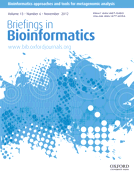
BRIEFINGS IN BIOINFORMATICS
Empowering Research with Cutting-Edge BioinformaticsBRIEFINGS IN BIOINFORMATICS is a premier academic journal dedicated to the dynamic field of bioinformatics, published by Oxford University Press. With a prestigious standing reflected in its Q1 quartile rankings in both Information Systems and Molecular Biology, this journal serves as an essential resource for researchers, professionals, and students eager to explore the intersection of biology and computational sciences. The journal not only publishes high-impact research articles but also reviews and critical commentaries that push the boundaries of understanding in bioinformatics. As it converges its objectives towards fostering innovation and knowledge dissemination from 2000 to 2024, BRIEFINGS IN BIOINFORMATICS offers rich insights that remain pivotal to advancements in genomic studies, data integration, and computational tools. Its ranking in the top percentiles of Scopus—30th among 394 in Computer Science and 44th among 410 in Molecular Biology—underscores the journal's influential presence in the academic community. Engaging with the latest research and trends, this journal is integral for anyone invested in the future of life sciences and data analytics.

TURKISH JOURNAL OF BIOLOGY
Connecting Minds, Cultivating Knowledge in BiologyTURKISH JOURNAL OF BIOLOGY, published by the Tubitak Scientific & Technological Research Council Turkey, is an esteemed peer-reviewed periodical that serves as a pivotal platform for advancing the fields of Agricultural and Biological Sciences. With a strong focus on innovative research across various biological domains, including Cell Biology, Genetics, and Microbiology, this journal not only fulfills the academic community's quest for high-quality research but also fosters collaboration and knowledge sharing among researchers. The journal's notable impact factors reflect its commitment to excellence, with its latest rankings placing it in Q2 in Agricultural and Biological Sciences (miscellaneous) and in Q4 for several other categories. By offering open access to its content, TURKISH JOURNAL OF BIOLOGY ensures that valuable biological insights are readily available to the global academic community. Its convergence from 2006 to 2024 signifies its longstanding influence in the biosciences, making it an essential resource for researchers, professionals, and students alike aiming to stay at the forefront of biological research and innovation.
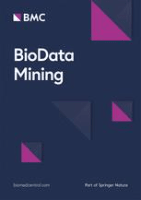
BioData Mining
Transforming Data into Discoveries in Life SciencesBioData Mining is a distinguished open access journal published by BMC, focusing on the dynamic intersection of bioinformatics, computational mathematics, and molecular biology. Since its inception in 2008, this journal has provided a critical platform for researchers and professionals to publish their findings, contributing significantly to the collective knowledge in fields such as biochemistry, computational theory, and genetics. With a robust impact factor and a commendable h-index, BioData Mining continues to be a vital resource for academic and industrial advancements, ranked in the top quartiles in various categories according to the 2023 metrics. The journal's commitment to open access ensures that cutting-edge research is readily available to the global scientific community, thereby enhancing visibility and fostering collaboration among scholars. Whether you are a researcher, student, or practitioner, engaging with BioData Mining will equip you with relevant insights and developments in the fast-evolving realm of bioinformatics.
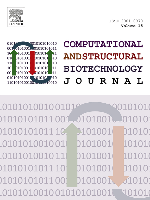
Computational and Structural Biotechnology Journal
Empowering Researchers with High-Impact Computational SolutionsComputational and Structural Biotechnology Journal is a premier open-access journal published by Elsevier, focusing on the intersection of computer science and molecular biology. Since its inception in 2012, the journal has established itself as a leading platform for innovative research, featuring groundbreaking studies in biochemistry, biophysics, biotechnology, and genetics. With a remarkable Q1 ranking in multiple categories, including Biochemistry and Genetics, it stands out for its high impact, evidenced by its strong Scopus ranking percentile scores. As a vital resource for researchers, professionals, and students, the journal aims to foster the dissemination of essential findings that leverage computational techniques to explore complex biological systems. In a rapidly evolving scientific landscape, Computational and Structural Biotechnology Journal serves as an indispensable resource for those looking to contribute and stay abreast of major advancements in the field.

Quantitative Biology
Exploring the Intersection of Numbers and NatureQuantitative Biology is a prestigious journal published by WILEY, focusing on the interdisciplinary study of quantitative approaches in the biological sciences. With an ISSN of 2095-4689 and an E-ISSN of 2095-4697, this journal has established itself as a critical platform for researchers exploring complex biological systems through mathematical and computational methodologies. Operating out of China, Quantitative Biology significantly contributes to its field, holding a Q2 ranking in various categories, including Applied Mathematics and Biochemistry, Genetics and Molecular Biology, according to the latest Scopus rankings. These rankings reflect the journal's commitment to publishing high-quality research that employs advanced modeling and simulation techniques. The journal's impact is evident with its position in the 84th percentile for Applied Mathematics, indicating its relevance and growth in a competitive academic landscape. Although it does not currently operate under an Open Access model, the journal is pivotal for professionals and students alike, aiming to bridge the gap between mathematical theories and biological applications. Researchers are encouraged to submit their innovative findings and engage with the vibrant community dedicated to advancing the quantitative understanding of biological phenomena.
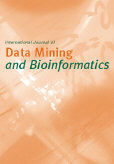
International Journal of Data Mining and Bioinformatics
Empowering Research through Data and Bioinformatics Synergy.The International Journal of Data Mining and Bioinformatics, published by InderScience Enterprises Ltd, stands as a crucial platform for researchers and professionals dedicated to the intersection of data science and biological informatics. With its ISSN 1748-5673 and E-ISSN 1748-5681, this journal captures the essence of innovative research from 2006 to 2024. Though indexed in the Q4 category for Biochemistry, Genetics and Molecular Biology and Information Systems, it maintains a respectable Q3 status in Library and Information Sciences, reflecting its growing influence within the academic community. The journal also provides insightful contributions to the fields of big data analytics, machine learning, and computational biology. Although it is not currently an open-access journal, its relevance is underscored by its Scopus rankings, indicating a solid standing in the disciplines it encompasses. Researchers, students, and practitioners in data mining and bioinformatics are encouraged to explore the findings and methodologies presented, paving the way for future innovations in this dynamic field.
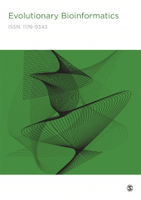
Evolutionary Bioinformatics
Exploring the dynamic landscape of evolutionary bioinformatics.Evolutionary Bioinformatics, published by SAGE Publications Ltd, is a pioneering open-access journal established in 2005, dedicated to advancing the field of evolutionary biology through innovative computational techniques and bioinformatics. With an ISSN of 1176-9343, it serves as a critical platform for researchers, professionals, and students to disseminate impactful findings and foster collaboration across disciplines. The journal spans a broad scope, contributing significantly to the areas of Ecology, Evolution, Behavior and Systematics, and Genetics, as evidenced by its respectable Scopus rankings and quartile placements in 2023. With a commitment to providing comprehensive, peer-reviewed research articles and tools for sharing knowledge, Evolutionary Bioinformatics plays an essential role in shaping the future of evolutionary studies and bioinformatics. Readers and contributors alike are encouraged to engage with cutting-edge research that pushes the boundaries of understanding in this dynamic field.

Network Modeling and Analysis in Health Informatics and Bioinformatics
Transforming health informatics with cutting-edge network modeling.Network Modeling and Analysis in Health Informatics and Bioinformatics, published by SPRINGER WIEN, stands as a vital resource in the interdisciplinary domains of health informatics and bioinformatics. With an ISSN of 2192-6662 and E-ISSN of 2192-6670, this journal aims to facilitate the dissemination of innovative research that intersects network modeling, data analysis, and health applications. The journal competes at a Q3 quartile level across multiple categories including Biomedical Engineering and Health Informatics, showcasing its growing influence within the academic community. As of 2023, it holds impressive Scopus rankings, including a 20th position in Urology, illustrating its significance in the field. Although not an open access publication, the journal is dedicated to providing cutting-edge insights from 2012 to 2024 and is poised to attract researchers, professionals, and students striving to push the boundaries of knowledge in health informatics and bioinformatics. This journal is not just a platform for sharing scholarly articles; it is a catalyst for advancing methodologies that enhance patient care and medical research.

Genetics Research
Driving Progress in Genetic and Medical SciencesGenetics Research, published by HINDAWI LTD, is a distinguished open access journal that has been at the forefront of genetic studies since its inception in 1960. With the transition to open access in 2019, this journal has expanded its accessibility, fostering knowledge dissemination across the global scientific community. Operating out of the United Kingdom, it provides a platform for innovative research in the fields of genetics and molecular biology, encompassing a broad range of topics that are highly relevant to medical sciences. As of 2023, it holds a Q4 classification in Genetics and a Q3 classification in miscellaneous Medicine, reflecting its ongoing commitment to scholarly excellence amidst shifting academic landscapes. While the journal's H-index remains unlisted, its indexed ranking within Scopus, with a rank of #325/328 in the Genetics category highlights the challenges ligated to its niche audience. Nevertheless, it serves as a crucial resource for researchers, professionals, and students eager to contribute to and stay informed on the latest genetic research trends and breakthroughs.

FUNCTIONAL & INTEGRATIVE GENOMICS
Elevating Genomic Science for a Healthier TomorrowFUNCTIONAL & INTEGRATIVE GENOMICS, published by Springer Heidelberg, is a leading journal in the fields of genetics and molecular biology. Established in 2000, it serves as a pivotal platform for advancing our understanding of genomic functionality and integration, making significant contributions to both basic and applied research in genetics. With a robust impact factor and a ranking in the Q3 quartile for Genetics and Q2 for Medicine (Miscellaneous), the journal aims to publish innovative research that explores the relationships between genomic data and biological functions, appealing to a diverse audience of researchers and professionals. Although it operates under a subscription model, the journal's extensive archives remain a valuable resource for academics seeking to stay abreast of the latest findings and methodologies in genomics. As the field evolves, FUNCTIONAL & INTEGRATIVE GENOMICS remains committed to fostering scholarly dialogue and the dissemination of groundbreaking studies that influence future research trajectories.